Congratulations! You are about to join those of us who live electric. You have rightfully been caught up researching which EV to buy and have now turned your attention to how you will charge it. We have done many polls of EV owners related to charging satisfaction in social media clubs, and the answer is always the same: Most EV owners charge most of the time at home. So why not do the job right from start to finish? After all, a properly installed EV charger is just a tiny fraction of the cost of an EV, and your first-year gas savings alone will cover the cost of a quality EV charging setup.
Related Story: 5 Common Home EV Charger Installation Mistakes To Avoid
I test electric vehicles for a living and have an engineering degree. Admittedly, I was just as confused as any EV novice when I first got started. Since then, I have installed an EV charger setup in two homes and prepped a remote cabin for a mobile EV charger. What follows is information I gained from speaking with multiple electricians expert in EV installations, advice I was given from EV experts who started ahead of me, and lessons I learned from actually handling the installation projects. I hope that some or all of it helps you. 
Start With An Electrician and a Permit - End With An Inspection The best advice I can offer is that you should start with a visit from an electrician you trust. If you don't have an electrician, or yours isn’t a veteran of many EV charger installation projects, start on Google. Search electricians in your area and look at the reviews sorted by “Newest.” The first visit is very important. During the visit, your electrician will check your electrical service and panel to ensure you can add a new circuit. Do not be surprised if your panel is full, or if your older home cannot handle the added power draw from a charger. These are challenges you can overcome, but the cost will be between $2,500 and $6,000 based on my experience. If you luck out and your panel can accept a new 50-amp charger, ensure the following: 1) Your electrician will pull a permit and be paid only after the municipality's inspector has approved the work. 2) Only copper wiring will be used in the new circuit 3) You and your electrician agree on a good spot for the new charger to be mounted. 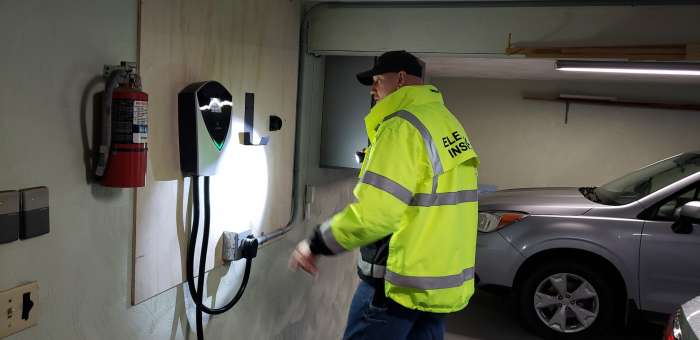 Planning to install the electrical circuit yourself? Best of luck. You should still pull a permit and have it inspected for safety and to protect yourself from liability.
Planning to install the electrical circuit yourself? Best of luck. You should still pull a permit and have it inspected for safety and to protect yourself from liability.
Get the 50-amp Setup
You want your home EV charger to be future-proof. Get a Level 2 wall-mounted charger. Most use a 50-amp circuit. Some use a larger one, but it's not really necessary.
Don’t Mount the Charger Close to the Panel To Save Money. If you are installing your new EV charger in your garage and the electric service panel is already in the garage, your instinct will be to put the charger as close to the panel as possible to “save money.” Don’t do that. Instead, look for the best possible location for the charger and spend the extra few hundred dollars to have it mounted where it is ideally suited. Your charger will likely have a 20-foot cord. Make sure that where you put the charger the cord will reach the most possible charging points in the space. 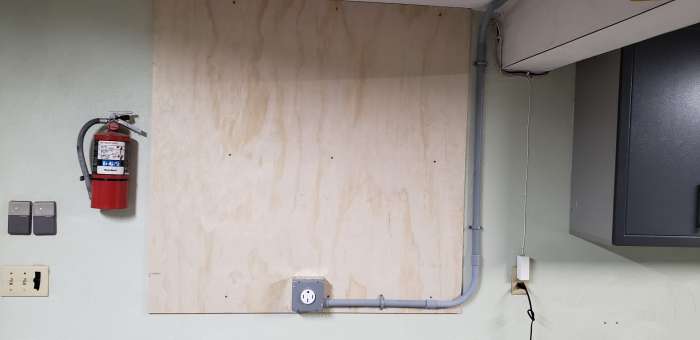 Before You Mount Your EV Charger - Do This First EV chargers are electrical components that can handle more power than anything else in your home. You want that charger to be mounted securely. Also, you may someday purchase a different charger to replace your first one. For both of these reasons, don't plan to mount the charger and its accessory items into drywall. Instead, spend $50 or less and get a nice piece of half-inch plywood. Your electrician can do this, or you can find a 4'x4' sheet at all home improvement stores and many hardware stores. Mount that to the area where your charger will go by securing it into the studs. Now you have a nice backing board onto which you can secure your charger and its accessories without messing with drywall anchors. One EV owner suggested instead of drywall, "Rather than just a plywood mount, consider adding "HardieBacker board" (cement board often used in shower and bath construction) which is inexpensive and fire-resistant. It can be layered over plywood."
Before You Mount Your EV Charger - Do This First EV chargers are electrical components that can handle more power than anything else in your home. You want that charger to be mounted securely. Also, you may someday purchase a different charger to replace your first one. For both of these reasons, don't plan to mount the charger and its accessory items into drywall. Instead, spend $50 or less and get a nice piece of half-inch plywood. Your electrician can do this, or you can find a 4'x4' sheet at all home improvement stores and many hardware stores. Mount that to the area where your charger will go by securing it into the studs. Now you have a nice backing board onto which you can secure your charger and its accessories without messing with drywall anchors. One EV owner suggested instead of drywall, "Rather than just a plywood mount, consider adding "HardieBacker board" (cement board often used in shower and bath construction) which is inexpensive and fire-resistant. It can be layered over plywood."
You Will Be Happier With a Hard-Wired System If you look at the images of my latest home charger setup, you will see that I opted to use an outlet rather than hardwire the EV charger. The reason for this is I test EV chargers, and hard-wiring each new one is a hassle I can’t accept. However, I strongly suggest you instead have your electrician hardwire your charger. 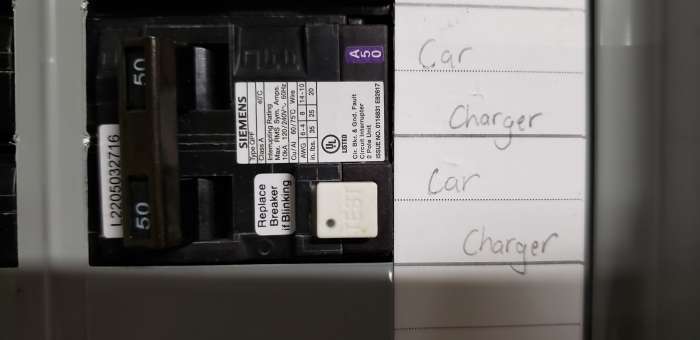 Many EV owners have found that the GFCI protection can cause a plug-in system to have false positive trips of the breaker. By hardwiring, you can skip that hassle. The device will have GFCI protection itself. If you opt for an outlet code dictates you will need a GFCI breaker. Hardwiring allows for a standard breaker. You can always use a GFCI breaker as well if you wish, but hard-wiring will offer the option of switching to a standard breaker if your GFCI breaker does cause nuisance tripping. Confused? Your electrician can explain it better than I can.
Many EV owners have found that the GFCI protection can cause a plug-in system to have false positive trips of the breaker. By hardwiring, you can skip that hassle. The device will have GFCI protection itself. If you opt for an outlet code dictates you will need a GFCI breaker. Hardwiring allows for a standard breaker. You can always use a GFCI breaker as well if you wish, but hard-wiring will offer the option of switching to a standard breaker if your GFCI breaker does cause nuisance tripping. Confused? Your electrician can explain it better than I can. 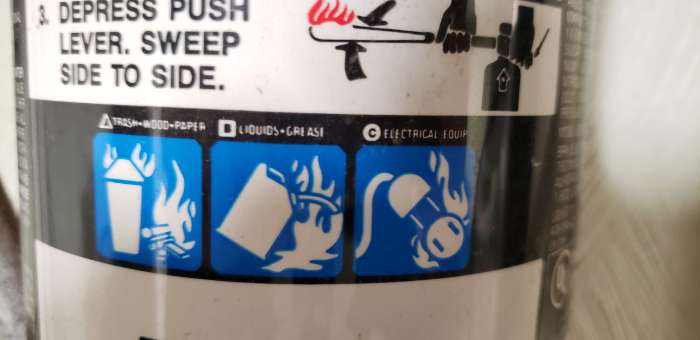 Two Safety Tips Once your new EV charger setup is mounted and working, why not put a smoke detector directly above it? Smoke detectors that can communicate wirelessly with other units to offer a remote alert are under $30 on Amazon. Suppose you place one above the charger and one it is wirelessly connected to upstairs in the living space. In that case, you will be alerted if you have an emergency in the garage and may be able to take immediate action to resolve it or give yourself more time to escape a fire. A fire extinguisher won’t handle the worst-case scenario - a fully-involved EV battery fire, but it can definitely be handy in case of a small electrical fire. Be sure you pick one rated for electrical fires or all three types of home fires. As you can see, this is a story that offers you handy tips from a person who installed multiple EV chargers in multiple homes. It’s not a DIY guide for installing an EV charger circuit because that is simply not a wise job to do yourself. Hire a professional and keep your family and your property safe. Feel free to offer any helpful suggestions you have in the comments section below. Electric vehicle charger installation images by John Goreham John Goreham is an experienced New England Motor Press Association member and expert vehicle tester. John completed an engineering program with a focus on electric vehicles, followed by two decades of work in high-tech, biopharma, and the automotive supply chain before becoming a news contributor. In addition to his ten years of work at Torque News, John has published thousands of articles and reviews at American news outlets. He is known for offering unfiltered opinions on vehicle topics. You can follow John on TikTok @ToknCars, on Twitter, and view his credentials at Linkedin Re-Publication. If you wish to re-use this content, please contact Torque News for terms and conditions.
Two Safety Tips Once your new EV charger setup is mounted and working, why not put a smoke detector directly above it? Smoke detectors that can communicate wirelessly with other units to offer a remote alert are under $30 on Amazon. Suppose you place one above the charger and one it is wirelessly connected to upstairs in the living space. In that case, you will be alerted if you have an emergency in the garage and may be able to take immediate action to resolve it or give yourself more time to escape a fire. A fire extinguisher won’t handle the worst-case scenario - a fully-involved EV battery fire, but it can definitely be handy in case of a small electrical fire. Be sure you pick one rated for electrical fires or all three types of home fires. As you can see, this is a story that offers you handy tips from a person who installed multiple EV chargers in multiple homes. It’s not a DIY guide for installing an EV charger circuit because that is simply not a wise job to do yourself. Hire a professional and keep your family and your property safe. Feel free to offer any helpful suggestions you have in the comments section below. Electric vehicle charger installation images by John Goreham John Goreham is an experienced New England Motor Press Association member and expert vehicle tester. John completed an engineering program with a focus on electric vehicles, followed by two decades of work in high-tech, biopharma, and the automotive supply chain before becoming a news contributor. In addition to his ten years of work at Torque News, John has published thousands of articles and reviews at American news outlets. He is known for offering unfiltered opinions on vehicle topics. You can follow John on TikTok @ToknCars, on Twitter, and view his credentials at Linkedin Re-Publication. If you wish to re-use this content, please contact Torque News for terms and conditions.











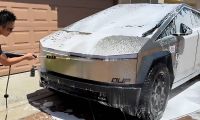

Comments
"Smoke detectors that can
Permalink
"Smoke detectors that can communicate wirelessly with other units to offer a remote alert are under $30..." Wasn't aware of this - good info.
Pretty good article with one…
Permalink
Pretty good article with one glaring error. The device is NOT a charger. It’s an EVSE (Electric Vehicle Supply Equipment). The charger is built into the car.
While common usage calls them chargers, this causes much confusion for new folks trying to understand the technology. They are basically just smart extension cords.
This should have been at least mentioned in the article.
Thank you Gordon, but in…
Permalink
In reply to Pretty good article with one… by Gordon Groff (not verified)
Thank you Gordon, but in English words often have two meanings. Yes, I know that EVSE is a better descriptor for the device. Yes, there is a "charger" inside the vehicle. But Tesla didn't name its DCFCs "SuperEVSEs" and ChargePoint didn't name its company "EVSEPoint," right? The word charger is appropriate and accurate as used in the story. Be well.